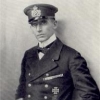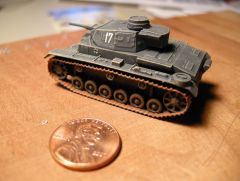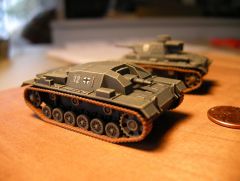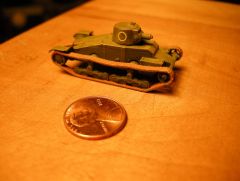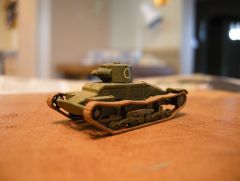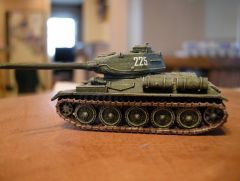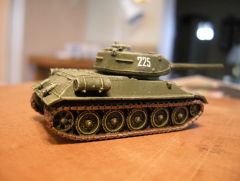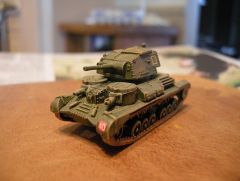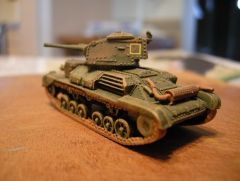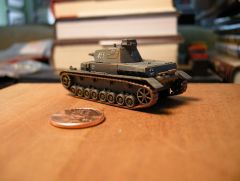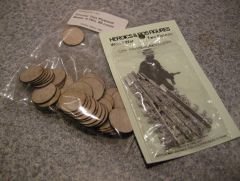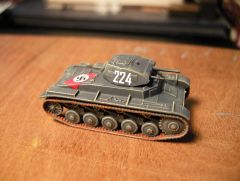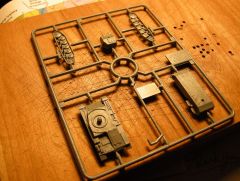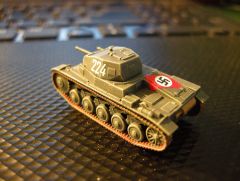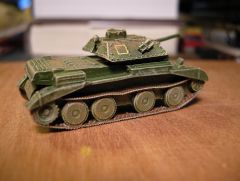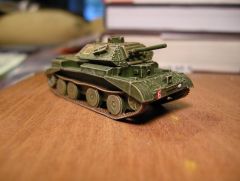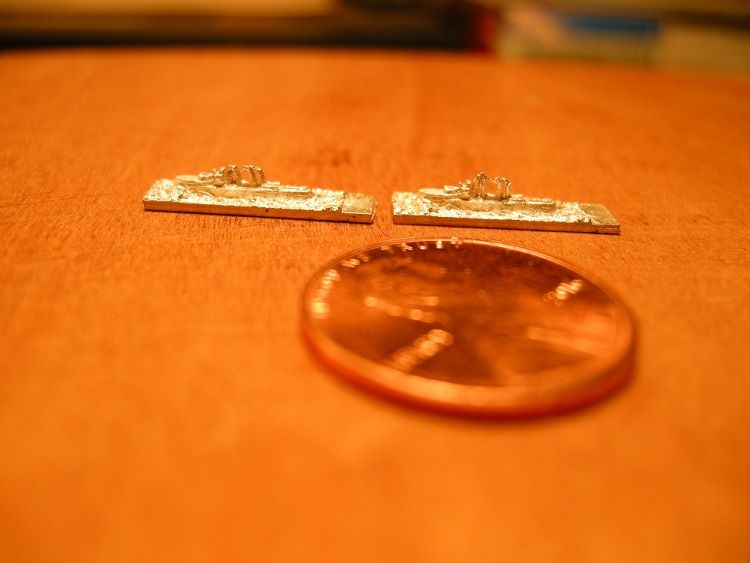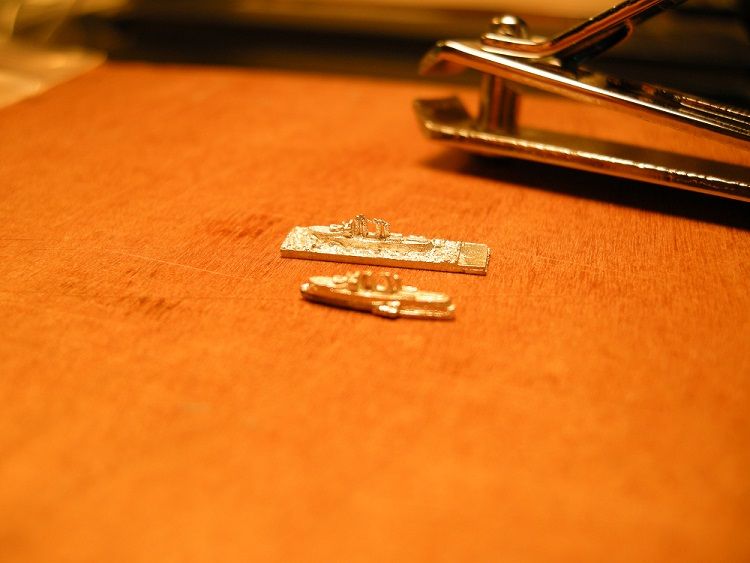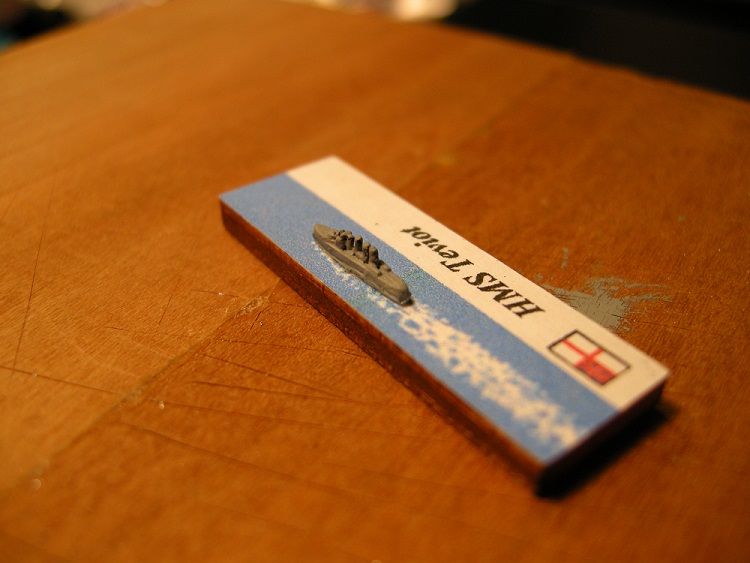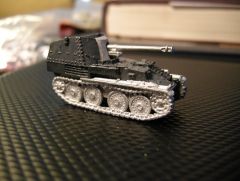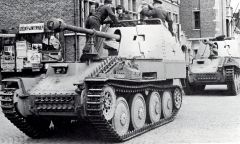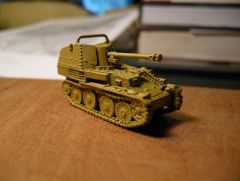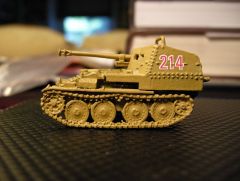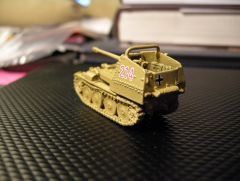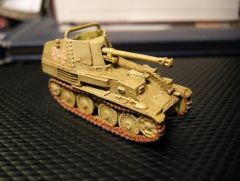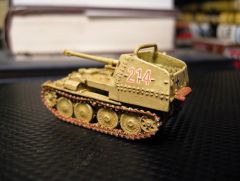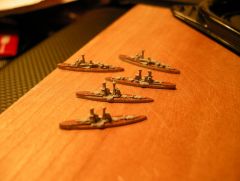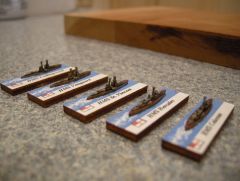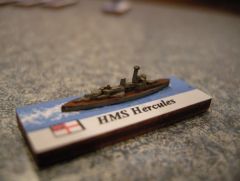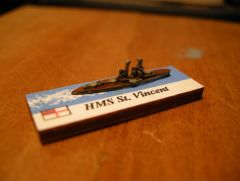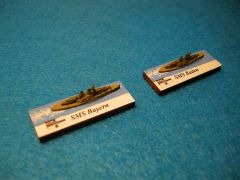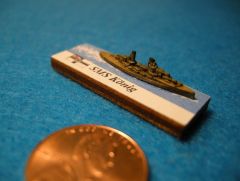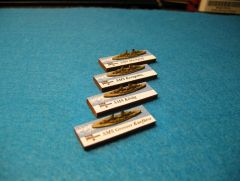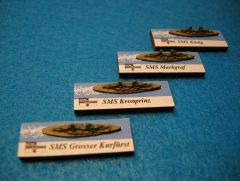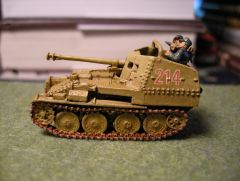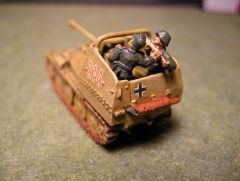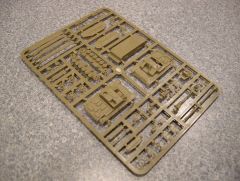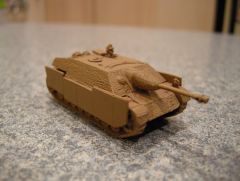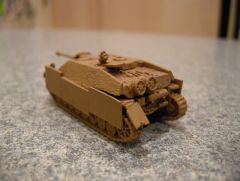While I wait for another order of bases to arrive intended to address the obsession with 1/6000 destroyers, I went back to the 1/100 pile. More and more of this stuff has surfaced as I've started cleaning up the work space, much more than I realized I'd accumulated.
Battlefront (Flames of War) has pushed out a ton of 1/100 kits over the years, most of them nicely done. My only gripe has been the gun barrels on the larger tanks which tend to be significantly out of scale, but when you come around to understanding these are wargame figures and not necessarily scale models, you make peace. A lot of the details tend to be exaggerated as well (rivets, track links, etc.) but from a figure perspective it makes the paint job that much easier.
The Marder (Marten) series are to my mind some of BF's best work. The kits have a fairly accurate profile, look to be scaled properly, and there are examples of each of the variants. Here's a Marder III Ausf. M (the last variant of the war) in the dry-fit stage of assembly:
In total there's only eight parts in this kit, making it a good candidate for two or three night's work. Don't focus too much on those baseball-sized rivets and agricultural-tractor caterpillar tracks...remember it's a figure, not necessarily a model.
The history of the Marders is an interesting one. They were developed as a way to quickly bring higher caliber AP on-line to address the ever-increasing numbers of T34's and KV1's being encountered from the earliest days of Barbarossa. A number of different variants were deployed using the chassis primarily of the Pzkpfw II and Czech Pzkpfw 38t, both of which were obsolete by 1942. Until the Pzkpfw IV was upgraded with a 75mm Kwk 40 L/43 gun there was no tank in the German arsenal capable of consistently penetrating the T34's brilliantly sloped armor..
The Marders based on the 38t chassis typically mounted a Russian 76.2mm F-22 field gun (large numbers of these were captured and re-purposed by the Germans) or, as with the Marder III M, a 75mm PaK 40 anti-tank gun. The Marder III M saw action not only on the eastern front, but in Italy and the western front as well. Here's a pic of a column of what look to be new Marder III M's on the move in Belgium in 1944:
Looking at this photograph, maybe those tracks are accurate, lol. Anyway, one of the big disadvantages of the Marder III M, other than the limited traverse of the gun and the open top, was that it carried less than thirty rounds for its 75mm PaK 40 gun (based on the towed version, not the KwK 40 version that went into the Pzkpfw IV which used a more compact shell). Given that a vehicle's ammo racks were rarely full, this could be a big problem if one got into a serious scrape.
The old Panzer Colors books tell me that these would have left the factory with a base-coat of dark-yellow. I'll have to look through the paint box and see what I've got.
Healey
Edit :: To start I laid on a coat of Testor's ModelMaster FS 30266 Afrika Mustard:
Perhaps not drop-dead accurate but an adequate place to start.
I hadn't paid much attention to the open interior:
A credible attempt at some interior detail. A small rack of ammo and the radio on one side, along with a plinth for an antenna. The breach looks reasonably sharp. There are two crew figures to shoe-horn in here as well...a commander and gunner 
Edit :: Well, not much going on here...been distracted by those 1/6000 DD's. Dredged up some Battlefront decals and laid those on:
Micro-Sol is some amazing stuff. Perhaps a little garish, and that Balkenkreuz looks a bit over-sized. I think I'll stretch some sprue and try to get an antenna into the plinthe before we start detail-painting and weathering. The colors scream AfrikaKorps, but the IIIM never made it to that side of the Med. I keep reminding myself that dark-yellow was the factory color for 1943-on.



